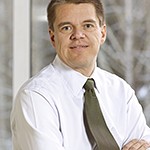
After more than 40 years of operation, DTVE is closing its doors and our website will no longer be updated daily. Thank you for all of your support.
Speed kills
 With high-speed broadband increasingly seen as the key competitive battleground for fixed-line service providers, cable operators are constantly looking to stay ahead of their rivals by investing in new technology, but they also need to prioritise investment to match what their customers want. Stuart Thomson investigates.
With high-speed broadband increasingly seen as the key competitive battleground for fixed-line service providers, cable operators are constantly looking to stay ahead of their rivals by investing in new technology, but they also need to prioritise investment to match what their customers want. Stuart Thomson investigates.
Speed is the killer app. High-speed broadband is now the key competitive battleground between fixed-line service providers. While some operators have adopted a strategy of acquiring exclusive content rights to differentiate their services, for the most part telecom and cable operators alike increasingly see TV as a useful tool to sell bundled offerings rather than their central area of focus. Increasingly, the true competitive differentiator is speed.Cable operators in particular have managed to build their broadband subscriber bases by outperforming telecom rivals on speed. Broadband revenue-generating unit net additions have offset long-term declines in legacy analogue TV subscriber numbers.
DOCSIS – the CableLabs standard for delivering broadband internet over hybrid fibre-coax cable networks that were originally designed to provide broadcast TV signals, has been the gift that keeps on giving for cable for the last two decades. Thanks to DOCSIS technology, cable has been able to stay one step ahead of telcos, which have adopted a variety of technologies to squeeze more out of their legacy copper networks but have ultimately reached a point where the only way forward is to dig up the ground and lay fibre.
Nevertheless, the growing prevalence of fibre in some areas means that cable operators can’t afford to rest on their laurels.
Over the last couple of years, cable operators have been able to set the realistic goal of delivering Gigabit broadband speeds to the home – a useful benchmark for marketing purposes as much as something that the average consumer will use. These operators have invested in new technologies to deliver high-speed broadband services more efficiently, including high-density Converged Cable Access Platform (CCAP) headend systems and the latest iteration of the DOCSIS standard – DOCSIS 3.1 – as well as, increasingly, looking at introducing a distributed architecture, which pushes intelligence in the network closer to the home and limits what needs to be performed at a central location.
Remote PHY
The benefits of a distributed access architecture are in the first instance about saving space and power in centralised headends and hubs. Increasingly, the focus has been on Remote PHY, a technology that separates the QAM modulation and demodulation functions of the CMTS from other headend functions and locates this closer to the edge of the network. This can provide a number of advantages for cable operators.
“The first benefit is a dramatic reduction in space and power in the headends and hubs. Separating the functions of the CCAP core from the Physical layer access network interface [PHY], enables CCAP cores to be used more efficiently, enabling them to support up to four times the number of service groups, thereby dramatically reducing space and power,” says John Holobinko, director of business strategy at Cisco’s cable access business unit.
In addition to saving space and reducing the amount of power required, Holobinko says that a distributed access architecture simplifies network management by enabling cable operators to replace “cumbersome analogue combining networks” in hubs with 10Gigabit Ethernet optics and layer two and three switches. The key technology building block of a distributed architecture, Remote PHY enables operators to digitise the stretch between hub and remote node, eliminating analogue fibre optical networks that are difficult to install and maintain.
Holobinko also says that extending the IP network all the way to the node opens up the possibility of extending intelligence to the node and enabling automation of RF installation and a better remote view of the network, something Cisco has invested in.
Finally, he says, a distributed access network “lays the groundwork for network virtualisation in the future”. Operators, says Holobinko, will be able to take full advantage of this when ‘cloud native’ CCAP becomes a reality (see sidebar).
Hanno Narjus (left), senior vice-president, network products at broadband cable technology specialist Teleste, agrees with Holobinko that IP migration is a key goal and incentive to look to Remote PHY. He says that as operators are under constant pressure to limit capital expenditure and operating expenditure while reducing churn, a distributed access architecture offers a neat solution, enabling them to stay ahead of the game without tearing up their existing infrastructure.
“The R-PHY-based distributed architecture is a tempting alternative for cable operators eager to take a quantum leap but still needing to run old legacy systems during the transformation. Continuous improvement in network reliability and visibility is critical for cable television industry in competition with other infrastructure providers,” says Narjus. “Digital fibre links offer a clear path to full IP delivery, which is welcomed by many operators who see IP as a catalyst for access network convergence. Many operators have heavily occupied regional headends running out of space and the R-PHY-based architecture enables headend space savings.”
Narjus says that operators face a choice of four different cable architectures – Remote PHY, Remote MACPHY, where both the physical layer and media access controller are located at the node, pushing on with traditional segmentation of the network into smaller service areas, and finally, laying fibre-to-the-home in the ground.
With a distributed architecture, says Narjus, operators have a choice between deploying Ethernet networks in some instances and investing in DOCSIS infrastructure. Remote PHY enables the use of existing HFC plant and therefore enables upgrades without civil works – a major cost saving for service providers.However, he adds, deploying this type of network does require interaction between TV and broadband teams in a way that operators may not be used to.
If a Remote PHY network is used for linear TV, there may be a need for software upgrades with requirements that TV engineers are unaccustomed to, while DOCSIS specialists may not be used to dealing with broadcast capacity management and PSI/SI tables required for set-top boxes.
Immediate savings
 For Asaf Matatyaou (right), vice-president, solutions and product management, cable edge business at Harmonic, in addition to bringing many practical benefits to operators, Remote PHY is highly cost-effective.
For Asaf Matatyaou (right), vice-president, solutions and product management, cable edge business at Harmonic, in addition to bringing many practical benefits to operators, Remote PHY is highly cost-effective.
“Remote PHY delivers immediate savings, including dramatic opex savings with the RF portion of the CCAP solution moving from headends to the field in Remote PHY nodes,” he says.
“With RF distributed into the field, space, power and cooling savings are substantial. Capex is also reduced, with the opportunity to consolidate equipment in centralised locations or data centres when combined with a virtualised CMTS/CCAP approach. These savings more than justify the shift to Remote PHY, as well as the opportunity to enable virtualisation as part of a cable access solution.”
According to Cisco’s Holobinko, the marginally greater cost of building a remote PHY network is “slightly more than the cost of building a conventional network” but the “initial investment premium is more than offset by operational savings”.
Holobinko in fact contends that it could be more costly not to build a Remote PHY network, pointing out that the trend towards so-called N+0 networks, where there are no amplifiers between the node and the home, is not really practical if operators continue to deploy conventional analogue optics and RF combining in the headend.
“In N+0 networks there are more than 10 times the nodes as the network it replaces. It is a daunting challenge to implement this number of nodes and service group splits both in the field and the headend, using a conventional cable architecture,” he says.
One European operator that has already rolled out Remote PHY is Denmark’s Stofa, which is working with technology provider Arris on the deployment.
For Cornel Ciocirlan, chief technology officer, EMEA at Arris, upgrading to Remote PHY simply makes sense as operators need to upgrade their networks to be able to offer 1.2GHz for competitive reasons in any case.
In terms of the practical advantages of doing so, he highlights the way it frees up operators by enabling them to digitise the network from the headend to the node, pushing digital-to-analogue conversion down to the node. This delivers a better signal-to-noise ratio and provides a better performance for subscribers. It gives operators more wavelengths and allows them to simplify the core network.
Liberty Global, Europe’s largest multinational cable network operator, is pursuing Remote PHY as an access architecture for the future and sees many use cases for the technology, according to Seamus Gallagher, vice-president, access network strategy.
According to Gallagher, Remote PHY will help the operator compete even more effectively in the future.
The key advantages, says Gallagher, include the improved signal-to-noise ratio that Remote PHY delivers, with a three-to-six dB improvement both downstream and upstream over existing node split techniques. Remote PHY also delivers the same signal-to-noise improvement when upgrading the optical access network to support 1.2GHz.
The technology also allows operators to deliver a signal-to-noise improvement by replacing analogue DWDM systems. Finally, says Gallagher, it enables operators to limit increases in power consumption, space and air-conditioning in centralised facilities.
“Combining all of these benefits together will allow Liberty Global to execute infrastructure change quickly that significantly enhances customer stability and reliability while driving more efficient techniques and capital into the access network. Decoupling the hardware and software in traditional CMTS/CCAP which Remote PHY enables allows us to scale our network much more gracefully in the future,” says Gallagher.
Arris’s Ciocirlan says that the extent to which Remote PHY benefits an operator will depend on a number of factors related to the operator’s specific network architecture.
In some cases it is easy to split nodes and create smaller service areas using existing technology. However, where there is a long distance between the headend and the node, Remote PHY provides an immediate benefit.
The obvious inference is that Remote PHY provides a greater benefit in geographies such as the US than it does in densely populated and cabled Europe. In the case of Stofa, it made sense to move to Remote PHY because the operator wanted to upgrade to DOCSIS 3.1. Where operators feel compelled to deliver an upgrade to deliver higher speeds in a competitive market, they may look ahead and upgrade to Remote PHY at the same time.
While there are “no major commercial imperatives” for Remote PHY, it does deliver advantages such as creating more space in the headend. Instead of upgrading their headend facility to support the growth of their network, operators might look to a distributed access architecture to avoid having to re-house their equipment. A distributed architecture, by enabling digitisation between the headend and the node, also enables the operator to put more wavelengths on existing fibre plant, creating savings.
Ciocirlan points out that investing in Remote PHY means that operators also have to invest in higher-level management platforms that enable them to manage and control the elements of the platform.
“Previously, the CMTS was the last digital part of the network,” he says. “Things are changing with Remote PHY. You are digitising to the node and there are more nodes than CMTSs. You have to manage all these new devices.”
Two-way street
One possible reason for investing in a distributed access architecture is that it is a fundamental building block towards delivering Full Duplex DOCSIS, the forthcoming iteration of the DOCSIS standard that will enable operators to deliver symmetrical bandwidth services at ultra high-speeds.
Is there likely to be demand for this type of service? The main factor that could lead cable operators to seek to deploy symmetrical bandwidth services is competition from fibre networks that are by their very nature symmetrical.
“Cable operators have high interest in delivering symmetrical bandwidth services for consumption and competitive purposes. Symmetrical services – over 1 Gbps – enable cable operators to compete against FTTH, where symmetrical services have been a historical differentiator. While the take rate for symmetrical services is lower than other tiers, this tier is priced higher and is a key marketing tool to win and retain subscribers,” says Matatyaou.
However, Matatyaou believes that operators already have the tools they need to deliver symmetrical services without waiting for Full Duplex DOCSIS. He cites Swedish operator Com Hem, which launched a symmetrical service using DOCSIS 3.1 on a trial basis using this technology in Stockholm.
According to Cisco’s Holobinko, it is possible that cable players facing fibre competition could look to deploy Full Duplex DOCSIS as “a pre-emptive move” to preserve their base under the threat of moves by fibre players in the future to offer 10Gbps symmetrical bandwidth via next-generation PON networks. Cable, the argument goes, can pre-empt this by investing in Full Duplex DOCSIS to protect their existing base, “making the business case more difficult for their competition”.
Cable, says Holobinko, could also use Full Duplex DOCSIS to offer advanced services to business customers as an alternative to deploying fibre or as a way to offer a service immediately ahead of deploying fibre in the future.
Finally, says Holobinko, operators could use Full Duplex DOCSIS to offer cellular backhaul services via their existing HFC infrastructure for 5G networks that require small cells.
Not everyone is convinced. From a European perspective, Teleste’s Narjus sees little demand for symmetrical bandwidth either from consumers or from operators.
“Fully symmetrical bandwidth is not a consumer requirement. Their requirement is the sufficient bandwidth for the services they use. There are almost no services that require fully symmetrical high bandwidth,” he says.
Narjus says that operators believe the network bottleneck is the downstream segment – and that is perhaps even more the case now than it was a few years ago. While he concedes that FTTH competition could lead some operators to look to symmetrical bandwidth, he points out that this is far from a universal situation.
Narjus also believes that “the shift to Full Duplex DOCSIS will not be painless as European networks differ across the regions”. Where there is extensive underground cabling, where networks serve multiple dwelling units and where there is a lack of fibre – all factors common in Europe – making the case for Full Duplex DOCSIS is challenging.
Arris’s Ciocirlan – another technologist with a European perspective – is inclined to agree, arguing that competition from fibre is not yet a major driver in many places and making the point that consumers appreciate topline downstream speed more than symmetrical capability.
“Peer-to-peer traffic is pretty much disappearing and streaming is taking over and that is one factor. Growth in downstream capacity has held steady while demand for upstream capacity growth has fallen in the last year or two,” he says.
With this in mind, operators are increasingly focusing on bandwidth reclamation in the downstream through initiatives such as deploying MPEG-4 set-tops to replace legacy MPEG-2 devices and planning for migration to IPTV, particularly for long-tail content.
For Ciocirlan, the appetite for Full Duplex DOCSIS has mostly come from the US so far, but even here it is not widespread. He points that the technology will “take a year or two before it is mature enough from a network perspective”, with sufficient Remote PHY devices deployed. Operators will also need to invest in Full Duplex DOCSIS cable modems. “It will be two years before it becomes a viable technology – it is not something imminent,” says Ciocirlan.
Symmetrical alternatives
Narjus and Ciocirlan’s view is borne out by Liberty’s Gallagher, who says his company’s focus on asymmetric services reflects the “large disparity between downstream consumption and upstream consumption of our customers” – something he quantifies as 10:1 in favour of downstream traffic.
Nevertheless, says Gallagher, symmetrical services may have a larger role to play in Liberty’s fastest growing market segment, B2B. However, even here, he believes that capacity demand will be served in the short term at least by the introduction of DOCSIS 3.1 rather than Full Duplex DOCSIS.
While Liberty is “participating in a number of CableLabs and industry initiatives” around Full Duplex DOCSIS, he adds that the N+0 architecture required for its implementation will only apply to a small proportion of the company’s footprint even by 2023.
For operators that need to provide a symmetrical service now, the alternative is to upgrade the network to deliver 200MHz upstream, which could deliver around 1.5Gbps depending on the state of the network.
For Ciocirlan, upgrading the upstream path to 200MHz would provide more than sufficient bandwidth for any application that exists today. “If a subscriber gets 500-800Mbps upstream they will be getting a significantly better service.
There is no app today that requires such a humongous amount of bandwidth either up or down, so it would be more a competitive marketing exercise,” he says.
To make large amounts of upstream bandwidth actually useful would require growth in popularity of consumption of large amounts of interactive high-resolution content in real-time, perhaps involving facial or gesture recognition, meaning there is little opportunity to compress it.
Teleste’s Narjus agrees that symmetrical high-speed broadband is not a priority for most operators. “For many operators utilising 204 MHz bandwidth per coaxial cable is already a tenfold improvement by comparison to the current situation and enough for years to come,” he says, referring to the alternative way to deliver higher upstream capacity.
For Holobinko, deploying a 200MHz high-split system has two disadvantages. It can only support peak return path bandwidth in the 1Gbps range, not enough to combat the threat posed by fibre operators, and it will cause problems for operators that use bandwidth in the 100MHz range for forward path signals to test and control set-top boxes. Retiring these devices could be costly for some operators.
Current priorities
Holobinko says that operators remain focused on digitisation of their networks, including the deployment of a distributed access solution with Remote PHY, virtualisation – meaning that cloud native applications will replace dedicated hardware – distribution, meaning deploying next-generation HFC access technologies that could include Full Duplex DOCSIS along with smart nodes, and automation of the network, meaning the use of telemetry, analytics and machine learning technologies.
For Narjus, the key priority for new customer acquisition is to deliver 1Gbps-plus services combined with a quality network. He says that when operators are planning for the long run, it is important to look at their strategy for migration to fibre and to invest with that in mind.
He says that Remote PHY is “an excellent investment to deliver IP services and it really offers a targeted upgrade to the areas and to the customers who really need the new capacity and service right now”.
Arris’s Ciocirlan points to a wider set of priorities that have to be balanced to ensure that limited resources are deployed to best advantage. Expanding reach is a significant priority for operators, but Ciocirlan also points out that cable operators still have a major advantage over telecom players that are forced to place additional fibre in the ground in order to offer ultra-fat services.
Behind expanding reach, cable operators are therefore also focused on investing in DOCSIS 3.1 to deliver more downstream capacity alongside bandwidth reclamation and expanding the spectrum available to them on their HFC plant. “In the process of addressing these, sometimes a distributed access architecture makes a lot of sense. People will adopt Remote PHY and node splits as they are needed,” he says.
For Liberty Global, expanding the reach of its network has been a priority in recent years. Gallagher says the cable giant is also expanding its range of services to encompass 1Gbps-plus services, starting with a recent launch based on DOCSIS 3.1 in Bochum in Germany, with further launches planned throughout this year across the company’s European footprint.
Gallagher says that Liberty also has plans to develop symmetrical services through a combination of DOCSIS 3.1 in the upstream, spectrum expansion and the development of new technologies involving the use of high capacity, high frequency transmission between 1GHz and 2.5GHz on its coax infrastructure.
“Our challenge is to continue to strike the balance in ensuring we allocate both capital and resource time to be successful on all these fronts supporting traditional footprint extension, product enhancements and innovative solutions to ensure success now and market competitiveness both medium and long term across residential and business segments.”
IN FOCUS: Towards the virtual headend
Introducing a distributed access architecture via Remote PHY brings many advantages to cable operators and can enable them to deliver better services. Ultimately, however, a greater benefit could be that it liberates operators from hosting the central headend in a specific physical location, enabling them to scale their operations according to demand.
Seamus Gallagher, vice-president, access network strategy at Liberty Global, says that the key benefit of Remote PHY ultimately will be that it opens the way to virtualisation of the cable headend. Currently operators add capacity through managing chassis, line cards, ports and licences and “because this takes so much time, we sometimes do it over 12 months before it is needed to avoid congestion”, he says.
With a combination of a data centre-located virtual CCAP headend and Remote PHY, it will be possible “to physically deploy the Remote PHY in the cabinet in the field and for all other resources to be spun up automatically once the
Remote PHY device registers itself on the network for the first time”, says Gallagher.
“This would be a paradigm shift and will allow for just-in-time capacity delivery, meaning zero congestion, better customer experience, lower churn and better capital efficiency,” he says.
 Cornel Ciocirlan, (right) chief technology officer, EMEA at Arris, confirms that distributed access architecture is a staging post on the way to virtualisation of the headend.
Cornel Ciocirlan, (right) chief technology officer, EMEA at Arris, confirms that distributed access architecture is a staging post on the way to virtualisation of the headend.
“Decoupling RF signals from the core means you can move towards virtualisation of the headend,” he says. While virtualisation of the headend involves technology that “still has to be proven”, he says that this shift will ultimately enable operators to scale their infrastructure in response to demand.
The virtualised headend is clearly something operators have in their sites, but there is still much work to be done to achieve that goal, says Ciocirlan.
“There is still significant work to be done compared with rolling out a distributed access infrastructure using our E6000 core for example. The standards have been designed around the traditional CMTS being connected to a Remote PHY. To evolve one step beyond that and virtualise the core introduces some complexity around processing video streams,” he says. “It is a lot easier to move to Remote PHY in the initial deployment. As things move on you could decide to separate the video processing out of that and think about virtualisation as well.”



